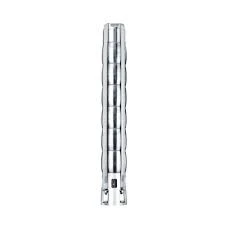Nov . 19, 2024 08:19 Back to list
submersible pump well
The Importance of Submersible Pumps in Well Water Extraction
Submersible pumps play a critical role in the extraction of water from wells, acting as key components for ensuring the efficiency and reliability of water supply systems. Commonly used in residential, agricultural, and industrial applications, submersible pumps are designed to operate underwater and push water to the surface, making them especially effective in deep well scenarios.
Understanding Submersible Pumps
A submersible pump is an electric pump that is submerged in the fluid it is intended to pump. It consists of a sealed motor that is closely coupled to a pump body. The design allows the pump to work efficiently while pushing water to the surface, as it relies on the principles of hydrostatic pressure. Unlike surface pumps, which can only lift water from a certain depth, submersible pumps can be placed several hundred feet underwater, significantly improving their usability in deep wells.
Advantages of Submersible Pumps
1. Efficiency Submersible pumps are known for their high efficiency. They are specifically designed to operate underwater, where the pressure helps the pump push the water upwards with less energy consumption. This efficiency translates to lower electricity usage, which can significantly reduce operational costs over time.
2. Durability These pumps are made to withstand harsh underwater conditions. They are often constructed with corrosion-resistant materials, ensuring longevity in various environments, whether it be fresh or saltwater. This resilience is particularly beneficial in agricultural settings where pumps are constantly exposed to variables stemming from the land.
3. Space-Saving Design Since submersible pumps are installed underground, they do not occupy surface space. This is particularly advantageous in urban areas where space is at a premium, allowing for more flexibility in land use while still providing a reliable water supply.
submersible pump well

4. Versatility Submersible pumps can be used in a variety of applications. They are commonly employed in residential water supply, irrigation systems, wastewater treatment, and even in dewatering processes during construction. Their versatile nature makes them suitable for both private and public sector projects.
Considerations for Installation
When considering the installation of a submersible pump for well water extraction, several factors must be taken into account. The depth of the water table, the flow rate required, and the chemical composition of the water are critical elements that influence the choice of pump. Additionally, ensuring proper electrical supply and safety measures for underwater installations is vital for effective operation.
Maintenance and Longevity
Routine maintenance is important to prolong the lifespan of submersible pumps. Regular checks for wear and tear, as well as cleaning of filters and components, will help maintain optimal performance. It is also advisable to schedule professional inspections to address any potential issues before they escalate into costly repairs.
Conclusion
In conclusion, submersible pumps play an indispensable role in well water extraction, offering an efficient, durable, and versatile solution for various water supply needs. By understanding their functioning and ensuring proper installation and maintenance, users can maximize the benefits of these pumps, securing a reliable water source for years to come. Whether for residential use or larger agricultural applications, submersible pumps are truly a testament to modern engineering in the management of vital water resources.
-
Submersible Water Pump: The Efficient 'Power Pioneer' of the Underwater World
NewsJul.01,2025
-
Submersible Pond Pump: The Hidden Guardian of Water Landscape Ecology
NewsJul.01,2025
-
Stainless Well Pump: A Reliable and Durable Pumping Main Force
NewsJul.01,2025
-
Stainless Steel Submersible Pump: An Efficient and Versatile Tool for Underwater Operations
NewsJul.01,2025
-
Deep Well Submersible Pump: An Efficient 'Sucker' of Groundwater Sources
NewsJul.01,2025
-
Deep Water Well Pump: An Efficient 'Sucker' of Groundwater Sources
NewsJul.01,2025
-
 Submersible Water Pump: The Efficient 'Power Pioneer' of the Underwater WorldIn the field of hydraulic equipment, the Submersible Water Pump has become the core equipment for underwater operations and water resource transportation due to its unique design and excellent performance.Detail
Submersible Water Pump: The Efficient 'Power Pioneer' of the Underwater WorldIn the field of hydraulic equipment, the Submersible Water Pump has become the core equipment for underwater operations and water resource transportation due to its unique design and excellent performance.Detail -
 Submersible Pond Pump: The Hidden Guardian of Water Landscape EcologyIn courtyard landscapes, ecological ponds, and even small-scale water conservancy projects, there is a silent yet indispensable equipment - the Submersible Pond Pump.Detail
Submersible Pond Pump: The Hidden Guardian of Water Landscape EcologyIn courtyard landscapes, ecological ponds, and even small-scale water conservancy projects, there is a silent yet indispensable equipment - the Submersible Pond Pump.Detail -
 Stainless Well Pump: A Reliable and Durable Pumping Main ForceIn the field of water resource transportation, Stainless Well Pump has become the core equipment for various pumping scenarios with its excellent performance and reliable quality.Detail
Stainless Well Pump: A Reliable and Durable Pumping Main ForceIn the field of water resource transportation, Stainless Well Pump has become the core equipment for various pumping scenarios with its excellent performance and reliable quality.Detail
